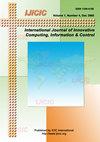利用地理信息系统绘制红树林脆弱性指数
IF 1.1
Q4 COMPUTER SCIENCE, ARTIFICIAL INTELLIGENCE
International Journal of Innovative Computing Information and Control
Pub Date : 2021-04-28
DOI:10.11113/IJIC.V11N1.309
引用次数: 2
摘要
红树林脆弱性评估的目标是提出减少脆弱性的建议。生长在海陆之间的潮间带和河口的红树林,同时存在于两个世界。红树林为防止海岸线侵蚀提供了至关重要的稳定性。它通过泥沙的增加来帮助保持陆地水平,同时通过作为缓冲物捕获被冲到下游的物质来平衡泥沙的损失。气候变化,特别是与之相关的海平面上升,对红树林沿海地区构成严重威胁,制定战略以通过战略管理规划减轻脆弱性至关重要。专家们正试图确定红树林如何受到气候变化和海平面上升的影响。我们如何预测海平面上升对红树林的后果和影响,然后相应地调整和减轻它们?脆弱意味着受到攻击或伤害的风险,无论是身体上还是情感上。环境脆弱性是生态系统对环境张量的易感性和适应潜力的特征。在这项研究中,研究人员将红树林的脆弱性分为1到5级,1表示非常低的脆弱性,5表示非常高的脆弱性。物理红树林指数(PMI)、生物红树林指数(BMI)和威胁红树林指数(HMI)是红树林脆弱性指数(MVI)的三大类。该研究的主要目标是开发一个准确而高效的地理信息系统数据库系统,该系统已在三个不同的地区,即库库普岛、丹绒比艾岛和双盖普莱岛进行了制定和测试或实施。该研究为选定的生态系统开发了一个基于gis的红树林脆弱性指数(MVI)模型,并通过使用参数将红树林从最不脆弱到最脆弱进行排序来突出红树林的脆弱性。该研究还对未来50年和100年的红树林损失进行了预测,并对红树林最脆弱的地区进行了分类。本文章由计算机程序翻译,如有差异,请以英文原文为准。
Mapping the Mangrove Vulnerability Index Using Geographical Information System
A mangrove vulnerability assessment's goal is to generate recommendations for reducing vulnerability. Mangrove forests, which grow in the intertidal zones and estuary mouths between land and sea, exist in two worlds at once. Mangroves provide crucial stability for preventing shoreline erosion. It helps to maintain land level by sediment accretion while balancing sediment loss by serving as buffers catching materials washed downstream. Climate change, especially the associated increase in sea level, poses a serious threat to mangrove coastal areas, and it is critical to devise strategies to mitigate vulnerability through strategic management planning. Experts are attempting to determine how mangroves have been affected by climate change and rising sea levels. How do we forecast the consequences and effect of rising sea levels on mangroves, and then adjust and mitigate them accordingly? Vulnerability implies the risk of being assaulted or hurt, whether physically or emotionally. Environmental vulnerability is a feature of impact exposure as well as ecological systems' susceptibility and adaptive potential to environmental tensors. Researchers in this study ranked mangrove vulnerability on a scale of 1 to 5, with 1 indicating very low vulnerability and 5 indicating very high vulnerability. The Physical Mangrove Index (PMI), Biological Mangrove Index (BMI), and Threat Mangrove Index (HMI) are the three major groups of the Mangrove Vulnerability Index (MVI)). The study's main objective is to develop an accurate and efficient GIS database system that has been formulated and tested or implemented in three (3) separate areas, namely, Kukup Island, Tanjung Piai, and Sungai Pulai. The study develops a GIS-based Mangrove Vulnerability Index (MVI) Model for a selected ecosystem, and highlights mangrove vulnerability by ranking them from least to most vulnerable using parameters. The study also provides a forecast for the mangrove loss in the next 50 and 100 years, as well as to classify areas where mangroves are most vulnerable.
求助全文
通过发布文献求助,成功后即可免费获取论文全文。
去求助
来源期刊
CiteScore
3.20
自引率
20.00%
发文量
0
审稿时长
4.3 months
期刊介绍:
The primary aim of the International Journal of Innovative Computing, Information and Control (IJICIC) is to publish high-quality papers of new developments and trends, novel techniques and approaches, innovative methodologies and technologies on the theory and applications of intelligent systems, information and control. The IJICIC is a peer-reviewed English language journal and is published bimonthly

 求助内容:
求助内容: 应助结果提醒方式:
应助结果提醒方式:


